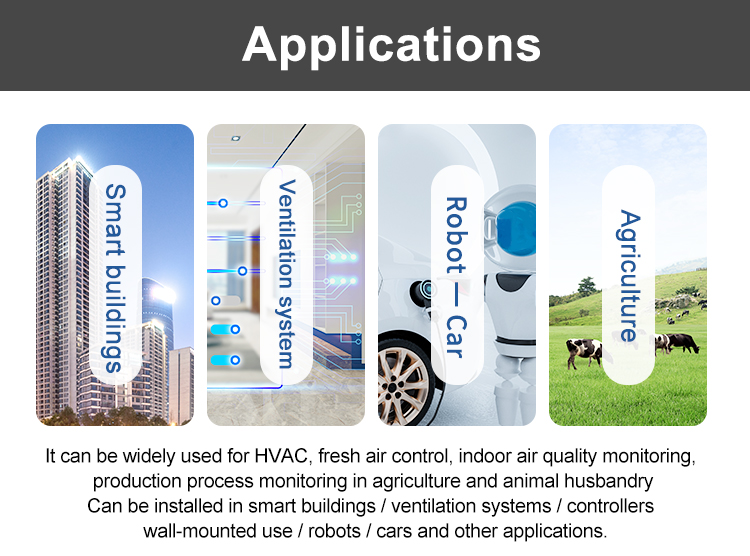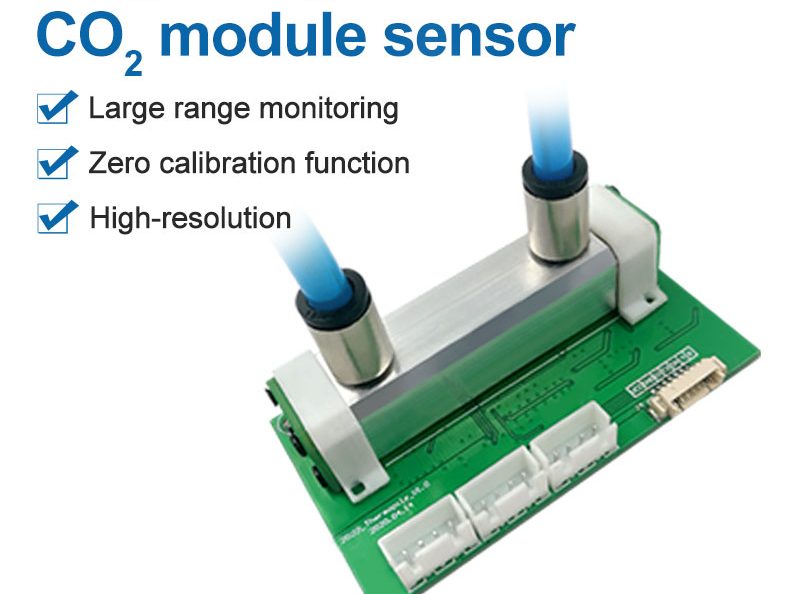Learn about NDIR CO2 sensors
NDIR CO2 sensor is large range carbon dioxide sensor is made of aluminum alloy polishing process. The pumping module can be widely used in medical petri dishes, air detection and chemical gas production process monitoring, and the diffusion module is suitable for measuring gas leakage environment. Modules can be installed in intelligent buildings, ventilation systems, controllers, robots, automobiles and other applications.
Non-Dispersive Infrared (NDIR) CO2 sensors have become as a critical tool in the realm of indoor air quality monitoring. These sophisticated devices employ advanced infrared spectroscopy technology to measure CO2 levels with remarkable accuracy, contributing significantly to enhancing human health, comfort, and energy efficiency within various settings such as residential buildings, offices, schools, industrial environments.
Principles and Functionality
NDIR CO2 sensor operate on the principle that each gas has a unique absorption spectrum in the infrared range. By shining an infrared light through a sample of air and measuring the amount of light absorbed at specific wavelengths, these sensors can accurately determine the concentration of CO2 present. This non-invasive and non-destructive method provides continuous, real-time data essential for maintaining optimal indoor air conditions.

Application of NDIR co2 Sensor
Indoor Air Quality Control
NDIR gas sensor play a pivotal role in maintaining healthy indoor air quality. High levels of CO2 can lead to drowsiness, reduced cognitive function, and even contribute to Sick Building Syndrome. By integrating NDIR sensors into building automation systems, they help regulate ventilation rates based on actual occupancy and CO2 levels, ensuring fresh air is supplied when needed, thus promoting a healthier and more productive environment.

Energy Efficiency and Sustainability
The application of NDIR CO2 sensor contributes significantly to energy conservation efforts. By controlling HVAC systems intelligently, they reduce overventilation during low occupancy periods, saving substantial energy without compromising air quality. This intelligent control aligns well with green building initiatives and sustainability goals by optimizing energy use and reducing greenhouse gas emissions from buildings.
Industrial Applications and Safety
Beyond indoor air quality control, NDIR CO2 sensor are crucial in industrial contexts too. We use sensors in the food industry where CO2 levels affect product quality. Or in the mining and oil & gas industries, where high levels of CO2 pose safety concerns. These sensors provide early warnings against potential risks, enabling swift corrective action to protect personnel and equipment.
Advancements and Future Trends
With ongoing advancements in sensor technology, NDIR CO2 sensors continue to improve in sensitivity, response time, and durability. Integration with IoT platforms allows for remote monitoring and predictive maintenance. Future trends point towards miniaturization, cost-effectiveness, and integration with other smart technologies for comprehensive environmental monitoring and control. The advent of AI and machine learning algorithms will further enhance their capabilities, predicting and managing CO2 levels with unprecedented precision.
Conclusion:
In conclusion, NDIR CO2 sensors have become indispensable instruments in the pursuit of healthy, energy-efficient, and safe built environments. Their ability to detect and quantify CO2 concentrations has revolutionized the way we manage and maintain the air we breathe indoors. We expect NDIR CO2 sensors to become increasingly integrated into everyday life and play an increasingly important role in safeguarding public health.
